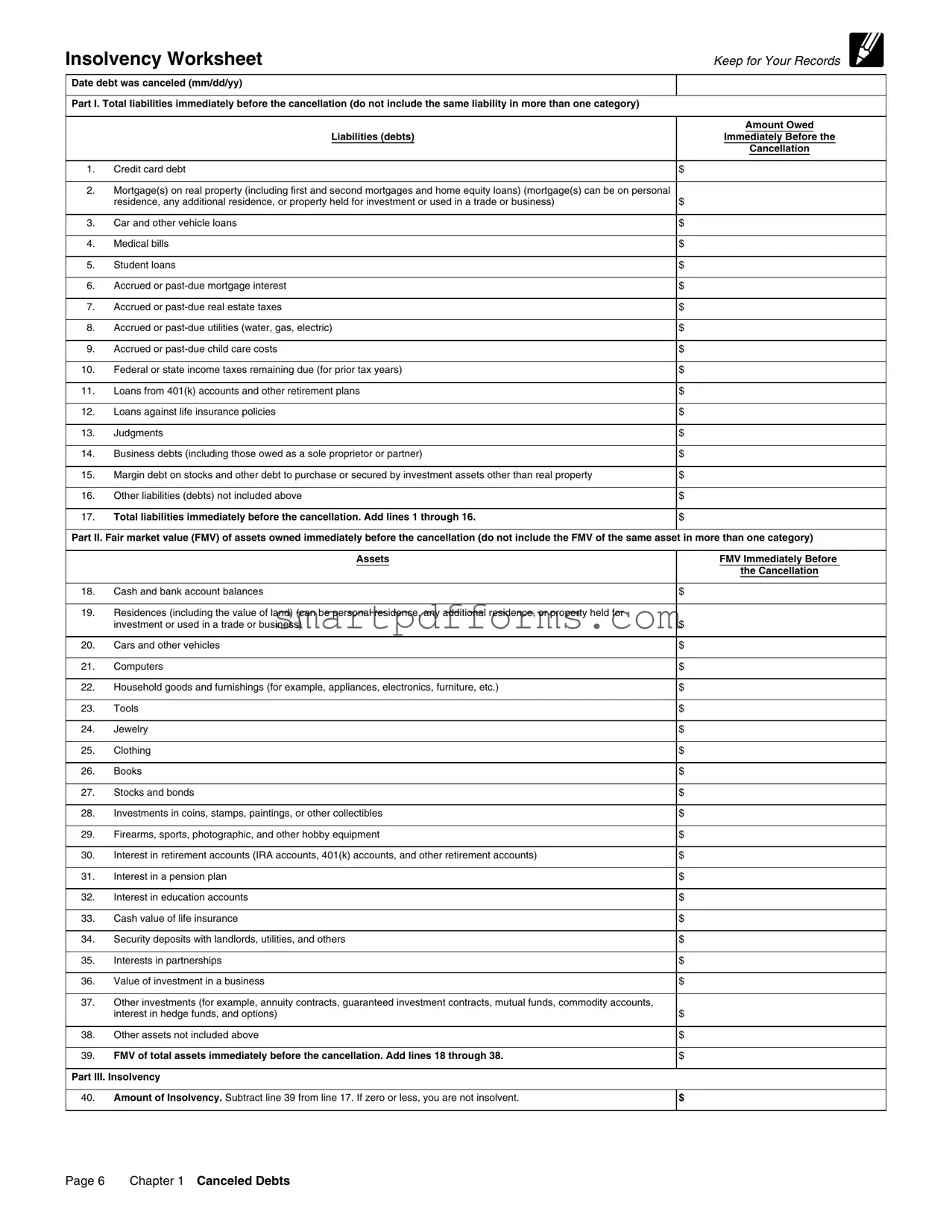Blank Insolvency Irs PDF Template
The Insolvency IRS Form is a tool used by individuals to determine their financial status immediately before the cancellation of debt. It requires a detailed listing of both liabilities and assets to calculate whether an individual was insolvent at the time their debt was forgiven. For those facing debt cancellation, accurately completing this form is crucial, and assistance is available for navigating this process.
For detailed guidance on filling out the Insolvency IRS Form, click the button below.
Make This Document Now

